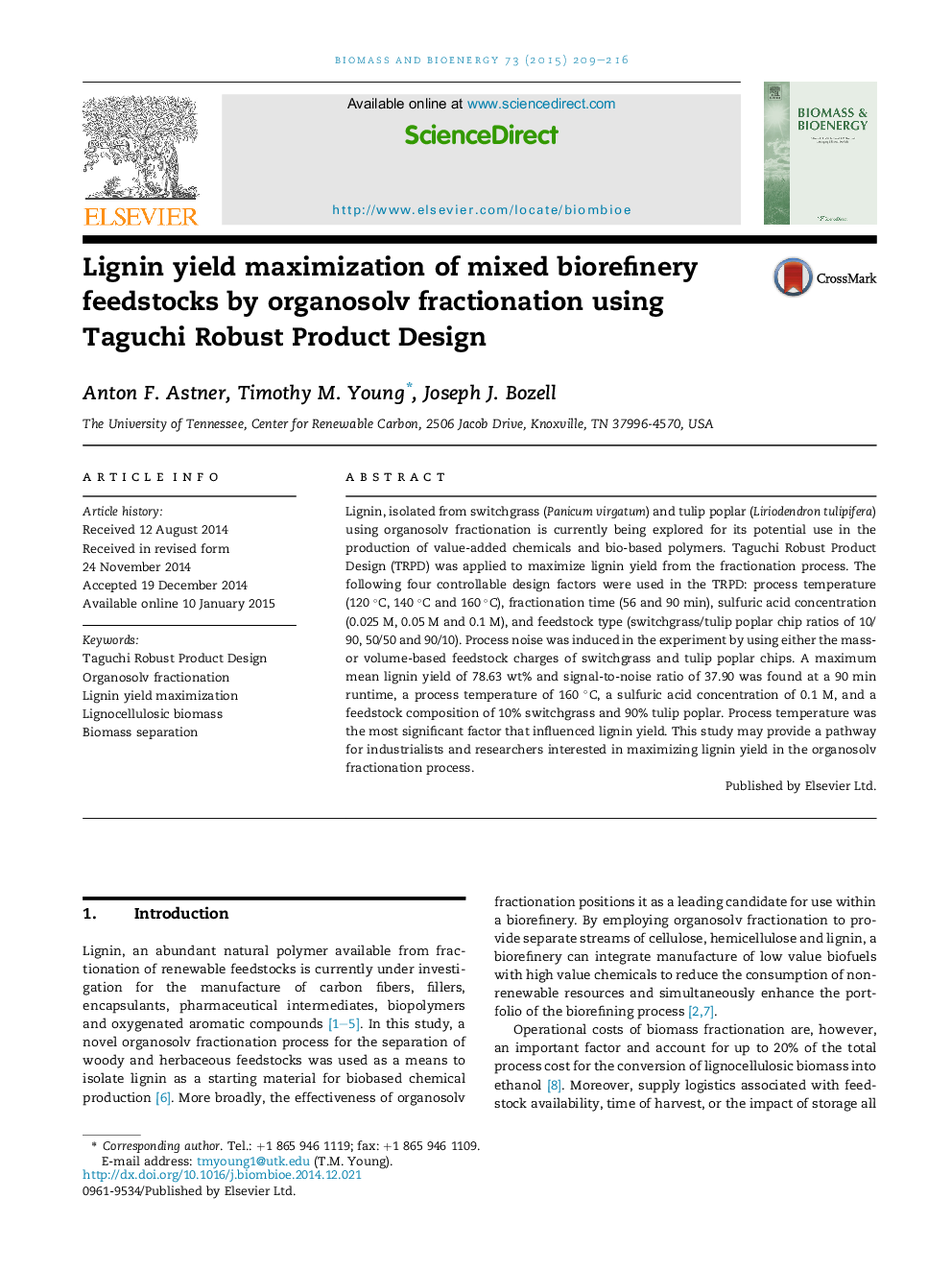| Article ID | Journal | Published Year | Pages | File Type |
|---|---|---|---|---|
| 7064030 | Biomass and Bioenergy | 2015 | 8 Pages |
Abstract
Lignin, isolated from switchgrass (Panicum virgatum) and tulip poplar (Liriodendron tulipifera) using organosolv fractionation is currently being explored for its potential use in the production of value-added chemicals and bio-based polymers. Taguchi Robust Product Design (TRPD) was applied to maximize lignin yield from the fractionation process. The following four controllable design factors were used in the TRPD: process temperature (120 °C, 140 °C and 160 °C), fractionation time (56 and 90 min), sulfuric acid concentration (0.025 M, 0.05 M and 0.1 M), and feedstock type (switchgrass/tulip poplar chip ratios of 10/90, 50/50 and 90/10). Process noise was induced in the experiment by using either the mass- or volume-based feedstock charges of switchgrass and tulip poplar chips. A maximum mean lignin yield of 78.63 wt% and signal-to-noise ratio of 37.90 was found at a 90 min runtime, a process temperature of 160 °C, a sulfuric acid concentration of 0.1 M, and a feedstock composition of 10% switchgrass and 90% tulip poplar. Process temperature was the most significant factor that influenced lignin yield. This study may provide a pathway for industrialists and researchers interested in maximizing lignin yield in the organosolv fractionation process.
Related Topics
Physical Sciences and Engineering
Chemical Engineering
Process Chemistry and Technology
Authors
Anton F. Astner, Timothy M. Young, Joseph J. Bozell,
